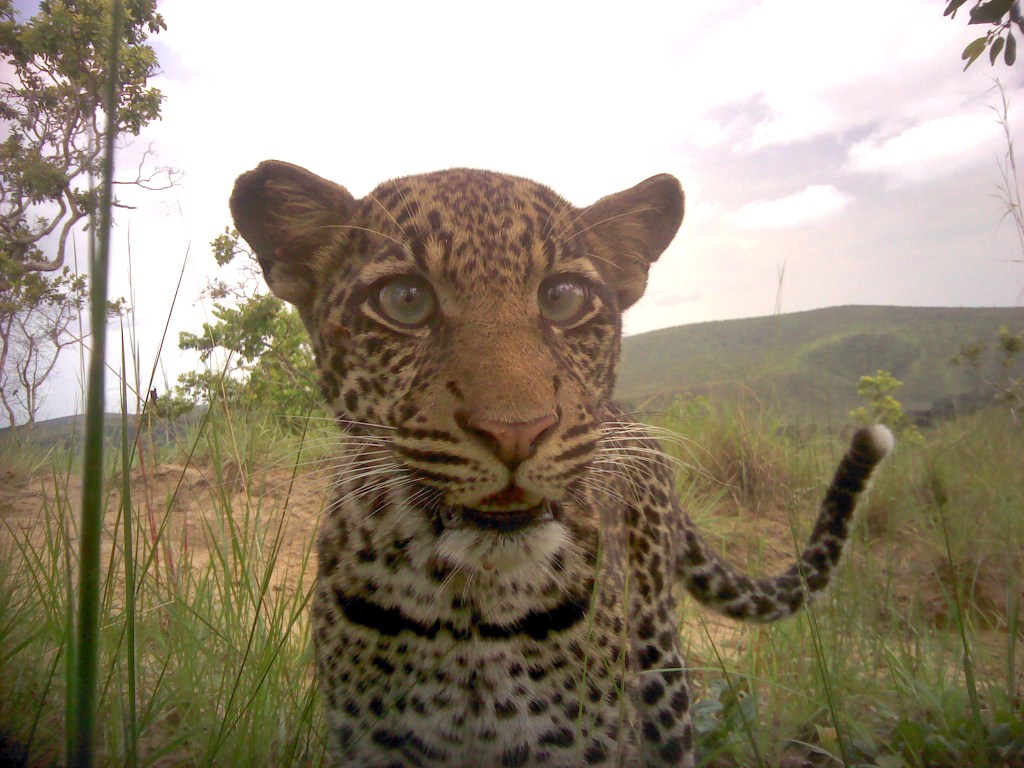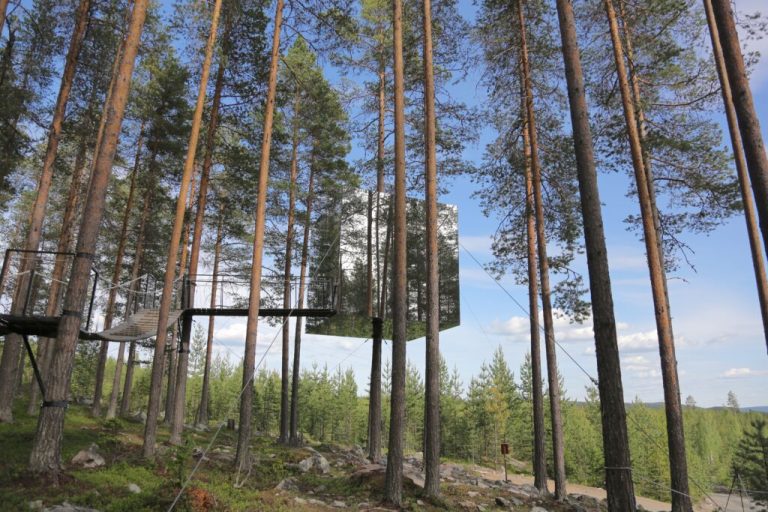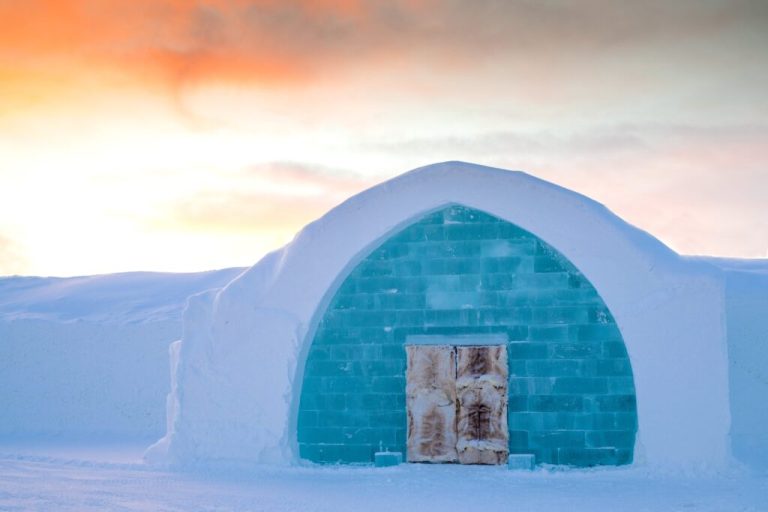If you randomly stumbled upon a video camera in your backyard, you might do a little investigating to see who was watching — and in “exceedingly rare” footage from the Batéké Plateau National Park, a chimpanzee did the same. Clasping a long stick between its fingers, the curious ape poked at the camera’s lens before eventually turning around and scurrying away.
When scientists at the park in Gabon, Africa, initially set up the camera, they were hoping to capture snippets of lions and leopards. Members of wild cat conservation nonprofit Panthera, the researchers — supporting Gabon’s National Park Agency and collaborating with Gaboma Multimedia and Production — are on a mission to rebuild the park’s lion population in what will be the first-ever lion restoration in West and Central Africa.
Gabon ANPN/Panthera/Gaboma Multimedia and Productions
Batéké Plateau is currently the only place where the big cats can coexist with Congo Basin rainforest animals like chimps and African forest elephants. But as Panthera’s West and Central Africa regional director, Philipp Henschel, told Nice News, although the scientists were hoping for a video of wild cats, the January footage of the young female chimp was an exciting discovery in its own right.
“For us, it’s really an incredible way to see, not only that wildlife is coming back, but also that wildlife is now once again, often in broad daylight, showing this incredible behavior,” Henschel said. When the team first began their survey work, the few animals that did exist in the park would primarily appear on camera at night, as they were afraid of encountering hunters who entered illegally during the day.
“And so for us now to see endangered species like forest elephants, these chimpanzees, but then also leopards and all the other species walk around in the park, in broad daylight, without fear of people and exhibiting the behavior that they should exhibit, including this exciting tool used by the chimpanzee … it’s just really, really good to see,” Henschel said. “It’s how a national park should be.” According to Henschel, some species’ populations, like African forest elephants and buffalo, have increased by 600% since 2001.

The Batéké Plateau isn’t just any national park. A unique “forest-savanna mosaic,” it was “the last stronghold for the lion in Gabon,” Henschel said, until the species was eradicated in the ’90s and declared “locally extinct” in 2002. But in 2015, a lion was captured on camera in the region — so park officials invited Panthera scientists to help them boost the cats’ population.
“This is a unique opportunity to restore this unique mix of rainforest animals and savannah animals … We hope that in the long term, the local communities can also benefit from tourism. It’s the only place in the world where tourists could see a gorilla and the lion on the same day,” Henschel said, adding, “This is really unique, and we hope in the future, even tourists could witness something like that.”
Panthera/ANPN
When the restoration efforts began a decade ago, an aerial survey found that nearly three-quarters of the park was occupied by poachers, many of whom were coming from neighboring Congo. Armed with this information, and the support of foundations like the Lion Recovery Fund, the Panthera team helped the park’s authorities build a ranger base on the Congo border to prevent hunters from crossing illegally.
“We were able to establish infrastructure that the Gabonese rangers could use to better control access to that area,” Henschel said. “And this really meant that it was getting more and more difficult for people entering this area illegally to operate in there. And so now the levels of poaching have been extremely reduced as a result.” In fact, Panthera surveys show that poacher capture rates decreased by 99.5% between the early 2000s and 2020.
And as the scientists work to keep poachers out, they’ve invited others into their mission — specifically, a local ethnic community called the Téké, who regard the lion as a sacred animal, per Henschel. “This initiative is now fully endorsed and actually welcomed by the local community,” he explained. “So that was a major achievement.” Going forward, the plan is for the Téké people to one day co-manage a community reserve in the park.
MPI-EVA PANAF/Panthera/Aspinall/ANPN
In 2023, the team completed construction of a lion release enclosure, and as of today, they’ve identified a genetically suitable source population and secured an agreement for a lion donation. Once the dry season begins in May, they’ll initiate the first lion transfer to hopefully create a breeding group in the area.
“From a personal perspective, having now worked in that landscape for over 25 years, it’s just incredible to see that wildlife,” Henschel said. “This video of the chimpanzee is one example, but we have so many exciting videos now and photos from this park. It’s really nice to see that an area that was so heavily impacted by illegal human use in the park, is now finally living again.”












